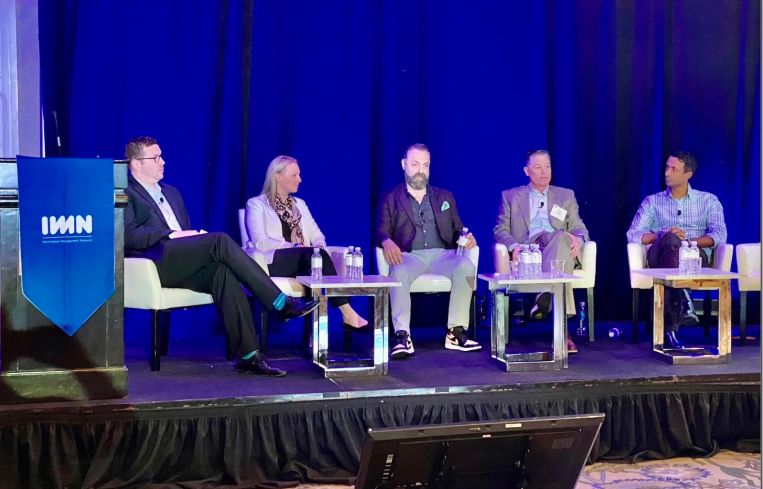Examining the Future of Post-Pandemic Properties
Investors and financiers at IMN’s winter forum discuss where the markets are going in 2022.
By Greg Cornfield January 31, 2022 6:25 pm
reprints

With nearly two full years of pandemic in the books, the proverbial dust is settling and it’s becoming clearer how real estate players are adjusting.
Investors, financiers and asset managers came together for IMN’s 18th annual Winter Forum on Real Estate & Private Fund Investing in Laguna Beach, Calif., earlier this month, to cover the state of the industry and discuss expectations moving forward.
A panel moderated by Carey Heyman of accounting firm CliftonLarsonAllen tackled one of the broader questions: What does the future look like for post-pandemic U.S. properties? The group talked about which property types saw the most significant changes since the beginning of the pandemic, and broke down the trends that are temporary and the ones that are permanent.
Kate Davis, a director at investment management firm Harrison Street, said her firm continues to focus on alternative sectors like education, health care, life sciences and storage, and recently added more data centers. She said Harrison Street just finished its best year ever in terms of capital raising and investing.
“The pandemic for us was really interesting in the sense that, if anything, it sort of gave us a buying opportunity in the sectors that we were already in,” she said during the panel. “So, rather than scare us off, it kind of gave us an opportunity to dig in further into the sectors we already had conviction around.”
John Azar, partner and founder of Peak 15 Capital, launched his mortgage lending company in the middle of the pandemic.
“[Dealing in the pandemic] showcased to us the kind of capital that’s out there, and that’s looking for deals,” he said during the panel discussion. “The deals that we saw during 2020, and the capital that we talked to during 2020 [came into play in 2021]. And 2022 is continuing to kind of lean more into multifamily, [single family residences] and industrial real estate, and some asset classes that no one was looking at a couple years ago.”
Last year, President Joe Biden announced plans to significantly restrict 1031 exchanges, but those plans have not been executed.
“[1031 exchanges are] a really important part of the commercial real estate market,” said Phil Mader, president and CIO of Kingsbarn Realty Capital, a 1031 exchange business.. “If you take it away, I’m not sure exactly what’s going to happen, but I don’t think it’s going to be good. But we were a beneficiary of that because it definitely pushed people off the street into the [1031 exchanges], which was really terrific.”
Mader said medical office and suburban office real estate investment has worked really well the past two years as people have left city centers. And on the development side, his firm added single-family and multifamily ground-up projects.
Zain Jaffer, CEO of Zain Ventures, a family office with a diversified portfolio of personal assets, said he thought there would be “blood on the streets” when the pandemic hit.
“I thought this would be a tremendous buying opportunity, and it was, but for such a short time,” he said. “The window was just six to 12 months.”
Instead, Jaffer said the pandemic made the industry more competitive. His firm made about 100 offers in multifamily and industrial real estate but were outbid.
“The market shifted,” he said. “People are OK with lower returners. You’ve got Blackstone out there, which is happy offering investors 6 percent [internal rate of return, or] IRR. It beats what you can borrow, for sure, so it’s hard to get double-digit IRR, which is something we were spoiled with for a while.”
Azar agreed, and said foreign capital is moving toward safety while seeking “some modicum of return,” and not double-digit IRR.
“Foreign investors are happy with 6, 7, 8 percent IRR, and a lot of the bigger funds like Blackstone, and even some bigger white-shoe firms like Goldman Sachs are getting into the business as well, and their expectations are tepid,” Azar said. “If you are a traditional sponsor that has been buying and expecting double-digit IRR and cash on cash, it’s very hard for you to win a deal because you can’t compete with somebody who’s expecting half as much IRR as you are.”
Asked for bold predictions for 2022, Davis said Harrison Street has recently made more substantive investment in life sciences.
“I think before the pandemic, it was definitely a buzz word and on everyone’s radar,” she said. “Post-pandemic, it’s nearly institutionalized. There are some cluster markets that have always been attractive, and now that is rolling into that many more markets. … There’s a lot more of that type of investing that’s going on in a lot of additional markets across the U.S.”
Additionally, Azar said the trend of ground-up development in growing markets like Idaho and Utah is going to continue.
“I think we’re going to see the concept of multifamily change a little bit where you’re seeing more high-end mobile home parks,” he said. “These are not your grandad’s mobile home park, these are cool and snazzy and really interesting and cool places.”
Gregory Cornfield can be reached at gcornfield@commercialobserver.com.


